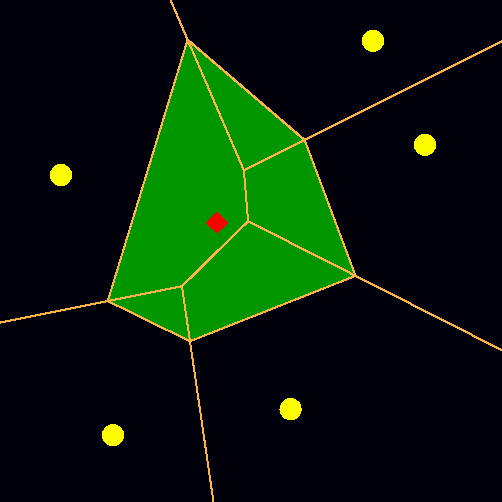 Research School of Earth Sciences,
Research School of Earth Sciences, Institute of Advanced Studies,
Australian National University,
Canberra, ACT 0200, Australia.
Introduction
Natural neighbours are a concept from the field of Computational Geometry which describe properties of arbitrarily distributed points in any number of dimensions. They have applications in many fields. This web page describes some projects at RSES which use natural neighbours. These projects involve the application of existing algorithms and techniques as well as the development of new algorithms for a range of geophysical problems. These include triangulation and interpolation of irregular data, parameterization of Earth models in two or three dimensions, and numerical modelling of deformation and fluid flow.Some useful links are:
- The qhull home page - source code for n-dimensional Delaunay tesselation
- The Geometry centre - source code for a wide range of geometrical problems
- Dave Watson's Home Page - applications of nn to contouring and interpolation
- N. Sukumar's NEM Page - NEM in solid mechanics
- Computational Geometry Algorithm Library
Topics
Papers
Movies
Code
When you have a password you can download it from here.



